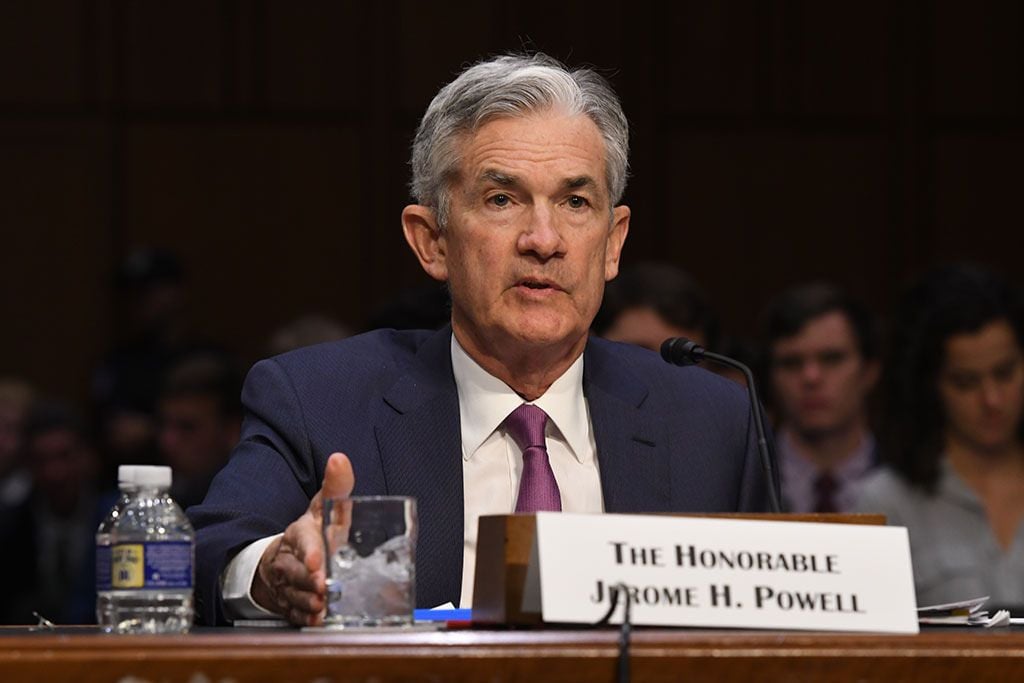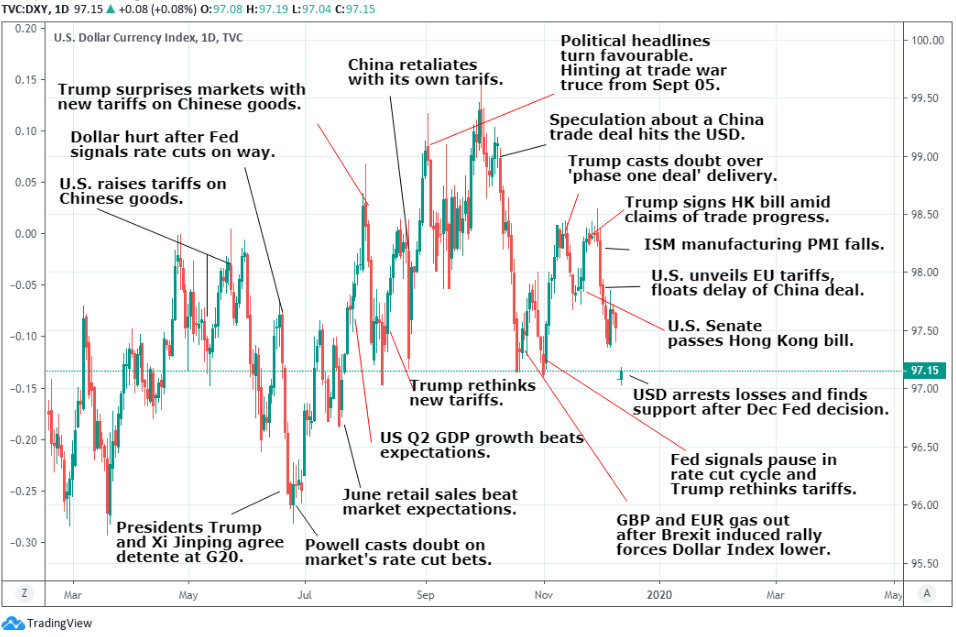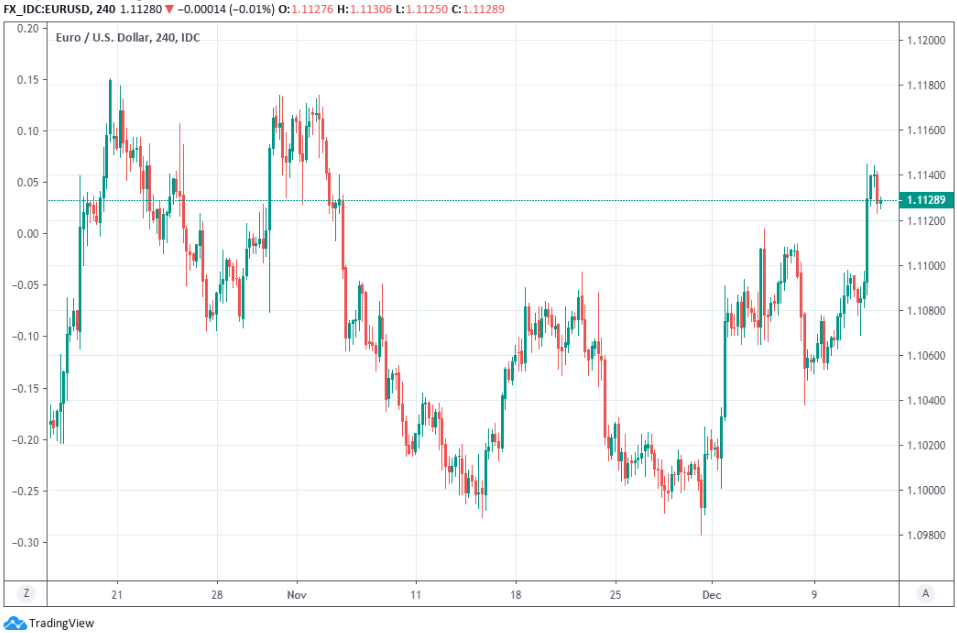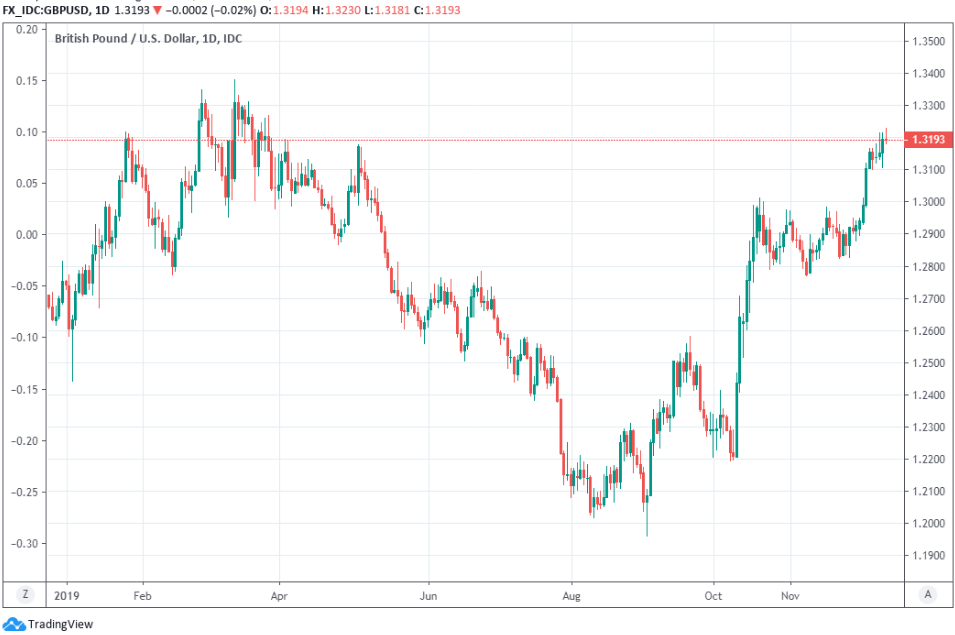U.S. Dollar Left Wounded by Federal Reserve but Finds Support amid UK Election, China Tariff Threat
- Written by: James Skinner

Image © European Central Bank
- USD finds support in wake of overnight, post-Fed losses.
- Fed has scrapped 2020 rate hike forecast from dot-plot.
- But indicated strongly that it's done cutting interest rates.
- Growth pulse, jobs market and inflation key to rate outlook.
- Requires "material reassessment" of outlook to alter stance.
- UK general election risk, China tariff threat offer USD support.
The Dollar came limping into the morning session Thursday after being wounded by the Federal Reserve (Fed) overnight, although some analysts see it finding support ahead as British voters head to the polls and markets wait to hear if fresh tariffs will land on China’s exports this weekend.
The Federal Reserve left its interest rate unchanged at 1.5%-to-1.75% Wednesday, in line with expectations, but dropped from its ‘dot-plot’ an earlier forecast that suggested a solitary rate hike could come at some point next year. It continues to project one rate increase in 2021 and 2022.
Dollar exchange rates sold off after the decision, other currencies advanced, U.S. bond yields fell and stock markets pushed higher.

Above: Dollar Index shown at daily intervals.
“Markets liked Mr. Powell's assertion that he would want to see a "significant" and "persistent" increase in inflation before he would want to raise rates, and he again drew attention to the undershoot to the target,” says Ian Shepherdson, chief economist at Pantheon Macroeconomics. “Markets put much more weight on the views of the Chair; that's probably the right approach.”
Fed Chair Jerome Powell’s subsequent press conference has left analysts and economists with the impression the bank has no intention of cutting interest rates again in the near future.
Powell said that so long as U.S. growth is “sustained”, the jobs market remains “strong” and inflation is “near the symmetric 2 percent objective" the current level of interest rates would "remain appropriate”. Once again, it would take a “material reassessment of our outlook” in order to change that stance on the Federal Open Market Committee, Powell reiterated Wednesday.

Above: U.S. two-year government bond yield shown at hourly intervals.
“The Fed won't be hiking anytime soon, but it's easy to see how the inflation data could make further easing much less likely. Yesterday, though, markets focussed on the removal of the 2020 rate hike forecast and Mr. Powell's relaxed assessment of the current inflation picture,” Shepherdson says.
The Fed had little obvious reason for ‘dovishness’ this week given Friday's November jobs report was a blowout that suggested 266k new jobs were created last month, the highest since December 2018. And third-quarter growth was revised higher the previous week, revealing the economy gained momentum last quarter rather than slowing like many thought. Meanwhile, inflation rose from 1.7% to 1.8% in October and hit 2.1% in November, taking it above the Fed’s 2% target. Core inflation held steady at 2.3%.
Such gains in prices, jobs and the economy, which come amid a lull in the trade war, were never very likely to have stoked caution or panic at the Fed. The bank has already cut rates three times this year to protect the U.S. from an ongoing global economic slowdown that had bitten the American manufacturing sector but it could take renewal of hostilities in the U.S.-China tariff fight or a turn in the jobs market to prompt a “material reassessment” at the Fed.

Above: Euro-to-Dollar rate shown at 4-hour intervals.
“[Our economist] concludes that while the Fed thinks it has everything under control, the same forecasting framework that helped us pinpoint the end of the Fed’s hiking cycle in 2019 is also indicating that the FOMC will have to cut rates all the way back to zero before the end of 2020. In short, enjoy that Xmas break – because you will need it,” says Michael Every, a strategist at Rabobank.
Pricing in the overnight-index-swap market had implied on Wednesday that the midpoint of the Fed funds range would sit at 1.50% on March 18, 2020 -. That's the day of the second 2020 Fed meeting and many would say it suggested something close to a 50% probability of a rate cut before then so Powell’s Wednesday hint that rates could remain where they are now for a protracted period was not necessarily a negative for the Dollar.
Given that pricing in the interest rate markets, the fact that investors sold Dollars and bought other currencies in response to Wednesday’s statement has taken some analysts by surprise. Although some also say the Fed-inspired weakness is unlikely to last for long.
“We are more inclined to think that the post-Fed reaction is a head fake. At the end of the day, EUR remains a long way removed from challenging the USD anytime soon and we do not think investors have much capacity to rattle the ranges at this time year - particularly ahead of some key near-term event risks like the UK election,” says Mazen Issa, a strategist at TD Securities.

Above: Pound-to-Dollar rate shown at daily intervals.
“There may be more relief for the dollar bloc currencies however. A sidelined Fed and bottoming global growth should be particularly supportive for risk - especially with other central banks likely pinned to the sidelines. We are particularly focused on AUD and CAD. Shorts in the former are looking stale but the 200dma at 0.6912 will be the major litmus test. As for CAD, a comfortable Fed just reinforces that the BOC can remain sidelined for some time and hence, still bodes well for a relatively higher yielding CAD,” Issa says.
Thursday's Fed-induced price action comes as British voters head to the polls in an election that will itself be the deciding vote on the direction of travel for Pound Sterling, and to a lesser extent the Euro, in the weeks ahead.
Markets favour a Conservative Party victory over the increasingly radical opposition Labour Party and the pollsters have led them believe that's exactly what they're going to get this Thursday. Exit polls are out from 22:00 and the result will be known in the early hours of Friday morning.
"Sterling won’t be fully priced in until the result is all but guaranteed, roughly 3am Friday morning if you plan on being up with me. The wider market has been stung by political outcomes in the last few years and will be wary of jumping the gun too early. A hung parliament at this stage does seem very unlikely but that only means that the fall in the value of the pound will be more concerted from current levels if that outcome were to materialise," says John Goldie, an FX dealer at Argentex, a London Stock Exchange-listed payments specialist.
It also comes ahead of a Sunday deadline on which the rest of China's annual exports to the U.S are due to be clobbered by a 15% tariff, although this time the levies will hit consumer goods and so could be felt by American households. Those tariffs would deliver a blow to the global economy but could support the Dollar because of the adverse impact on other currencies.
China's Commerce Ministry said Thursday the country is in communication with the U.S. but would not provide further comment, although Trump said via his Twitter account in the noon hours the U.S. "is getting very close to a big deal with China".
Time to move your money? The Global Reach Best Exchange Rate Guarantee offers you competitive rates and maximises your currency transfer. Global Reach can offer great rates, tailored transfers, and market insight to help you choose the best times for you to trade. Speaking to a currency specialist helps you to capitalise on positive market shifts and make the most of your money. Find out more here.
* Advertisement





